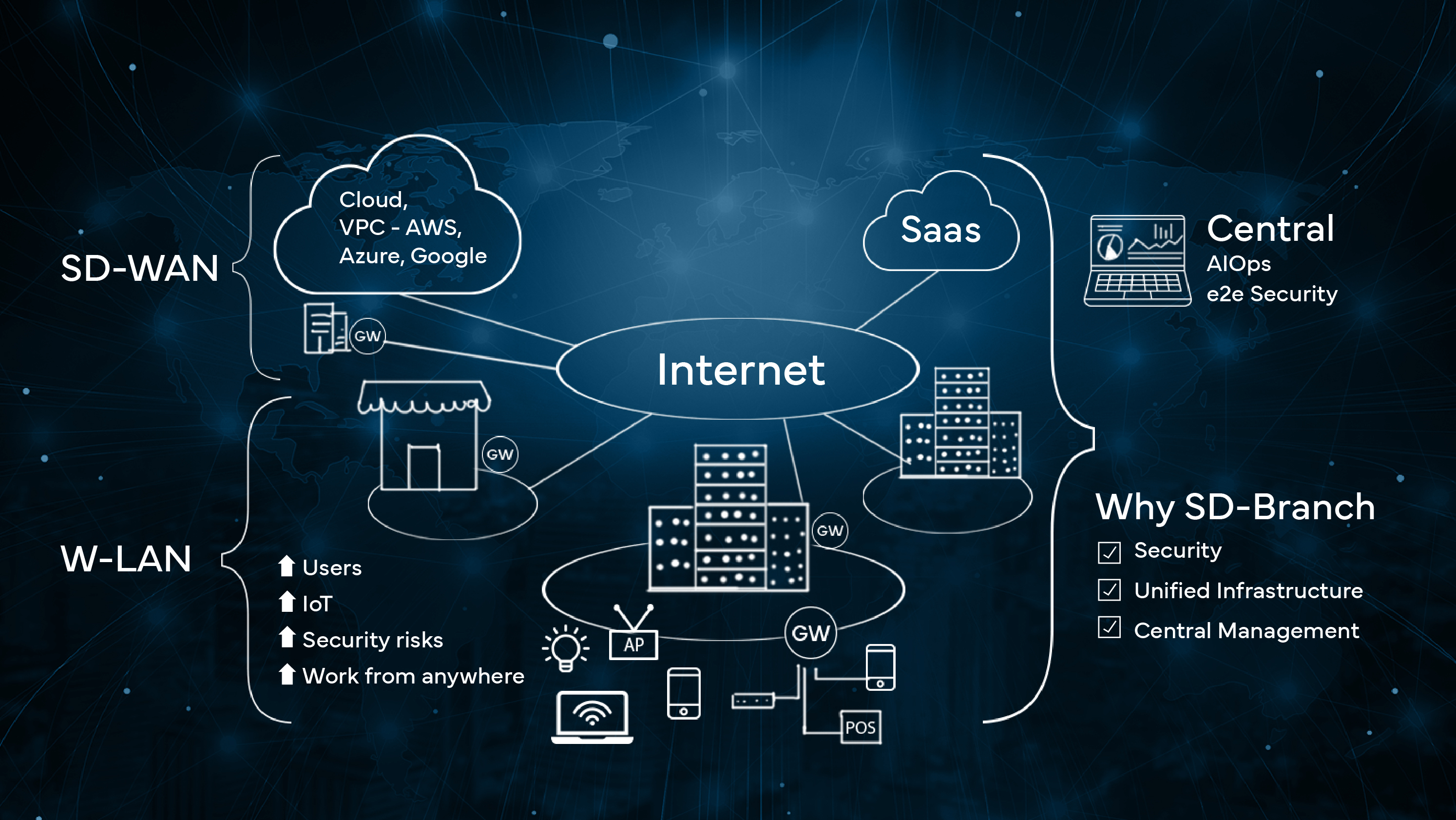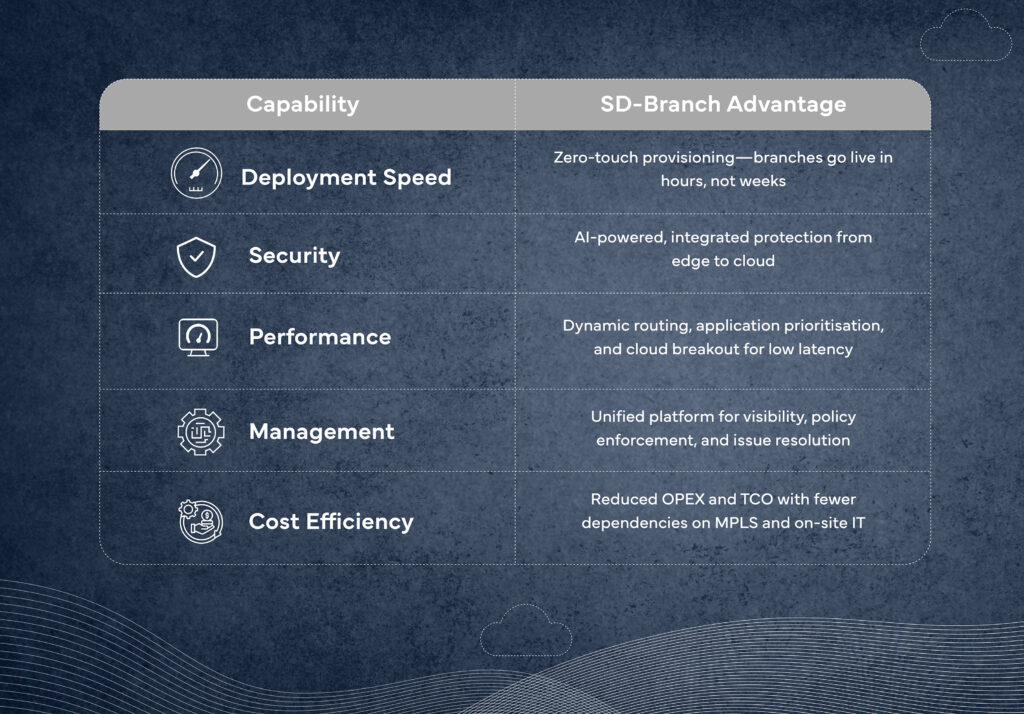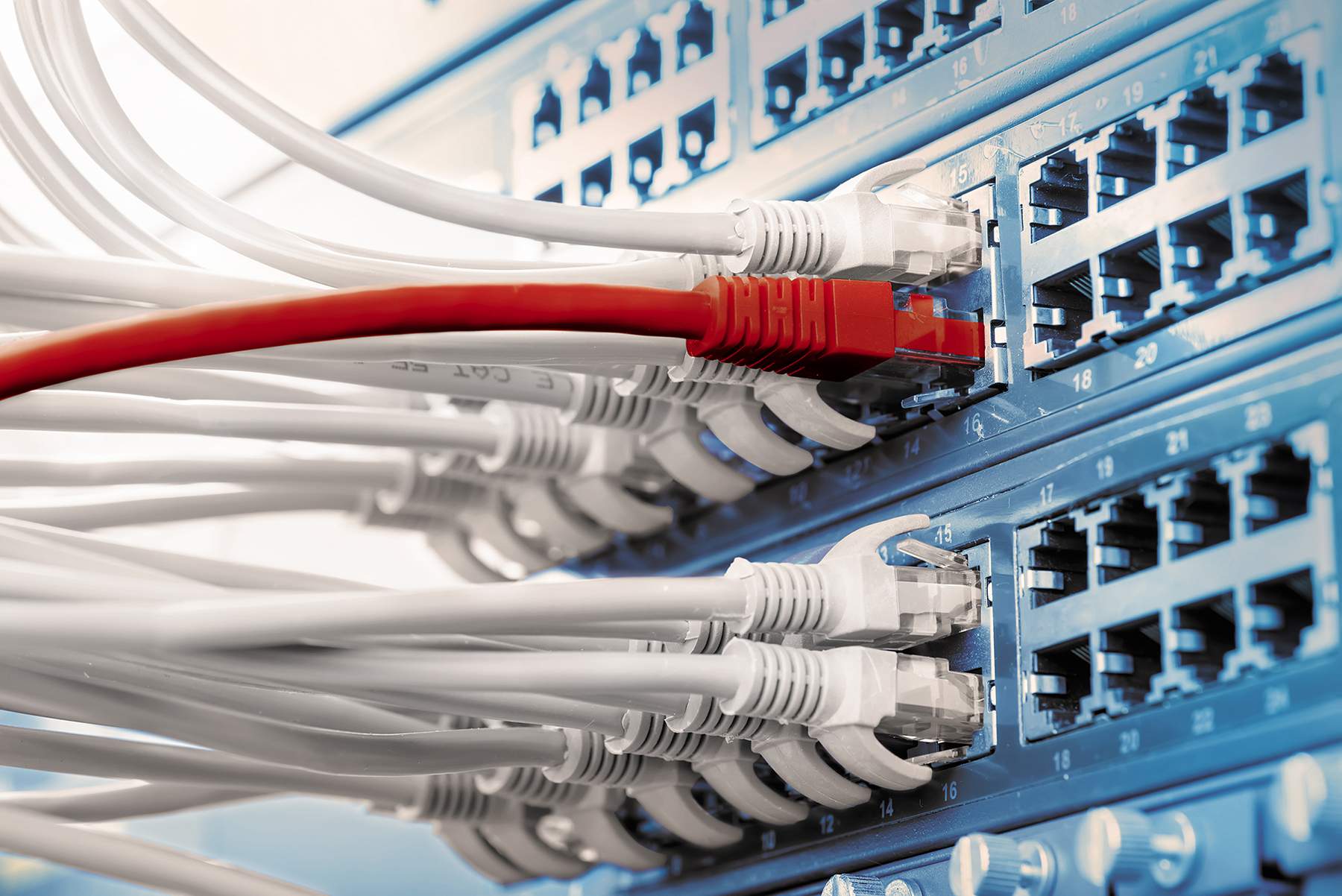If You’re Still Using Legacy Networks, You’re Already Behind
-
April 24, 2025
-
5 min read

Why SD-WAN Alone Is No Longer Enough
For years, SD-WAN has helped businesses move beyond MPLS-heavy architectures—offering flexibility, lower costs, and improved traffic routing. But in today’s cloud-first, security-conscious world, SD-WAN is only part of the puzzle.
Most businesses now operate across hybrid environments with growing numbers of branch sites, mobile users, IoT devices, and SaaS applications. In such settings, securing just the WAN layer isn’t enough. What’s needed is end-to-end control—extending from WAN to LAN, Wi-Fi, and edge security.
That’s where SD-Branch steps in.
By combining SD-WAN with integrated LAN, Zero Trust security, AI-driven insights, and cloud-first management, SD-Branch gives enterprises full visibility, automation, and control across the entire branch network. It simplifies operations, strengthens security posture, and enables scalable growth—without the headaches of managing fragmented solutions or multiple vendors.
Why Now? The Case for Urgent Transformation
These limitations—fragmented visibility, inconsistent security, and complex management—are no longer just IT challenges; they are business bottlenecks. They hinder agility, slow down expansion, and inflate operational overhead.
And the pressure is only mounting:
✔ 83% of enterprise workloads are shifting to the cloud
✔ 5G, IoT, and AI are redefining how decisions are made—instantly, and at the edge
✔ Cybersecurity threats are growing in sophistication, demanding end-to-end visibility and automated, real-time responses
To thrive in this landscape, enterprises need more than just smarter routing. They need a unified, intelligent, and secure branch network architecture.
SD-Branch: The Next Evolution in Networking
Enter SD-Branch—a software-defined solution that integrates SD-WAN, LAN, security, and automation into a single, cloud-first architecture. Unlike traditional WAN, which focuses solely on the WAN side, SD-Branch unifies LAN and WAN, providing end-to-end visibility, automation, and security.

What Makes SD-Branch the Future of Branch Networking?
SD-Branch isn’t just an evolution—it’s an industry transformation catalyst. Unlike traditional WAN, which focuses on transport and remains siloed between LAN, security, and cloud infrastructure, SD-Branch brings an Unified Branch Networking Model to enterprise networking. Its impact is distinctly sector-specific:
How Retail Brands Are Powering Omni-Channel Agility Across Locations
Retail networks can’t afford downtime or inconsistency. With SD-Branch:
- New store rollouts happen in days, not weeks, with consistent configurations and zero-touch provisioning.
- Unified control enhances POS uptime, inventory accuracy, and real-time insights into guest movement and behaviour.
- Integrated security mitigates shoplifting, surveillance blind spots, and non-billed transactions—a game-changer for store-level profitability.
How Modern Manufacturers Are Enabling Smart, Secure Production Environments
Distributed manufacturing environments demand real-time responsiveness. SD-Branch:
- Brings high-speed, reliable connectivity to even the most remote factory locations.
- Supports IoT-enabled monitoring, predictive maintenance, and localised cloud access for ERP/CRM tools.
- Enables business continuity with automated failover and deep network segmentation for OT/IT environments.
How the Logistics Sector is Building Connected, Automated Warehouses
For logistics, network agility equals faster fulfillment. SD-Branch:
- Accelerates warehouse onboarding with integrated connectivity, Wi-Fi, and security managed from a central dashboard.
- Prioritises critical applications (like WMS and real-time tracking) with intelligent traffic routing.
- Provides real-time visibility and analytics, making scaling across zones or cities frictionless.
How Are NBFCs Expanding Securely While Meeting Compliance Demands?
As NBFCs and small banks grow into Tier 2 and Tier 3 cities, they need fast, reliable, and compliant branch connectivity—across both WAN and LAN layers. SD-Branch makes this possible with an integrated approach to security, performance, and scalability.
- Secure WAN connectivity enables local internet breakout, reducing MPLS costs without compromising compliance.
- Cloud-managed LAN and Wi-Fi ensure consistent in-branch performance and secure access for devices and users.
- Built-in Zero Trust frameworks and AI-driven threat detection support CERT-In mandates, data localisation laws, and RBI regulations.
- Centralised dashboards give visibility into branch uptime, network health, and real-time threat intelligence—across every node.
Whether it’s opening new branches or securing existing ones, SD-Branch gives NBFCs a powerful, future-ready foundation to scale confidently.
Across All Verticals—The Core Gains Remain:

Essential Things to Think About Before Switching to SD-Branch
To guarantee a seamless transition, companies aiming to go beyond traditional WAN must assess many important factors:
- Is Your Network Ready for the Shift?
Have you audited your current infrastructure, bandwidth usage, and security posture?
Can legacy equipment or MPLS dependencies be replaced or optimised to support a modern SD-Branch architecture? - Is Security a Business-Critical Priority?
Does your organisation require strict compliance with industry-specific mandates and data sovereignty laws?
Are Zero Trust principles and advanced threat detection part of your current network security strategy? - Are You Operating in a Multi-Cloud or Hybrid Environment?
Can your network architecture support seamless connectivity to both public and private cloud platforms?
Are your SaaS applications getting direct, optimised cloud access—or is performance suffering? - Can You Leverage Automation for Better Operational Efficiency?
Are you able to automate issue detection and resolution using AI-driven insights?
Would self-healing capabilities and reduced manual intervention benefit your IT operations? - Do You Have a Rollout Plan That Minimises Disruption?
Are you considering a phased deployment approach to test SD-Branch in select branches?
Can you leverage zero-touch provisioning to reduce deployment time and IT overhead?
It’s no longer about making the decision to move—it’s about how fast you can act.
SD-Branch is not just a network upgrade—it’s a business transformation enabler. As enterprises accelerate toward hybrid work, multi-cloud environments, and AI-powered operations, the demand for unified, secure, and scalable branch infrastructure has never been greater.
✔ It brings together SD-WAN, LAN, Wi-Fi, and security into a single, cloud-first architecture.
✔ It eliminates network silos, reduces operational overhead, and enables faster branch expansion.
✔ It empowers IT and business leaders with real-time visibility, automation, and control—without complexity.
The next-generation enterprise network is already here. It’s software defined. It’s secure by design. It’s built to scale.
How soon will your business make the shift?
 Share
Share









